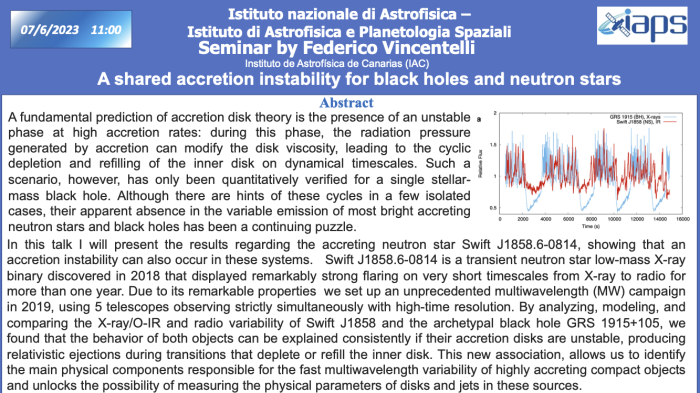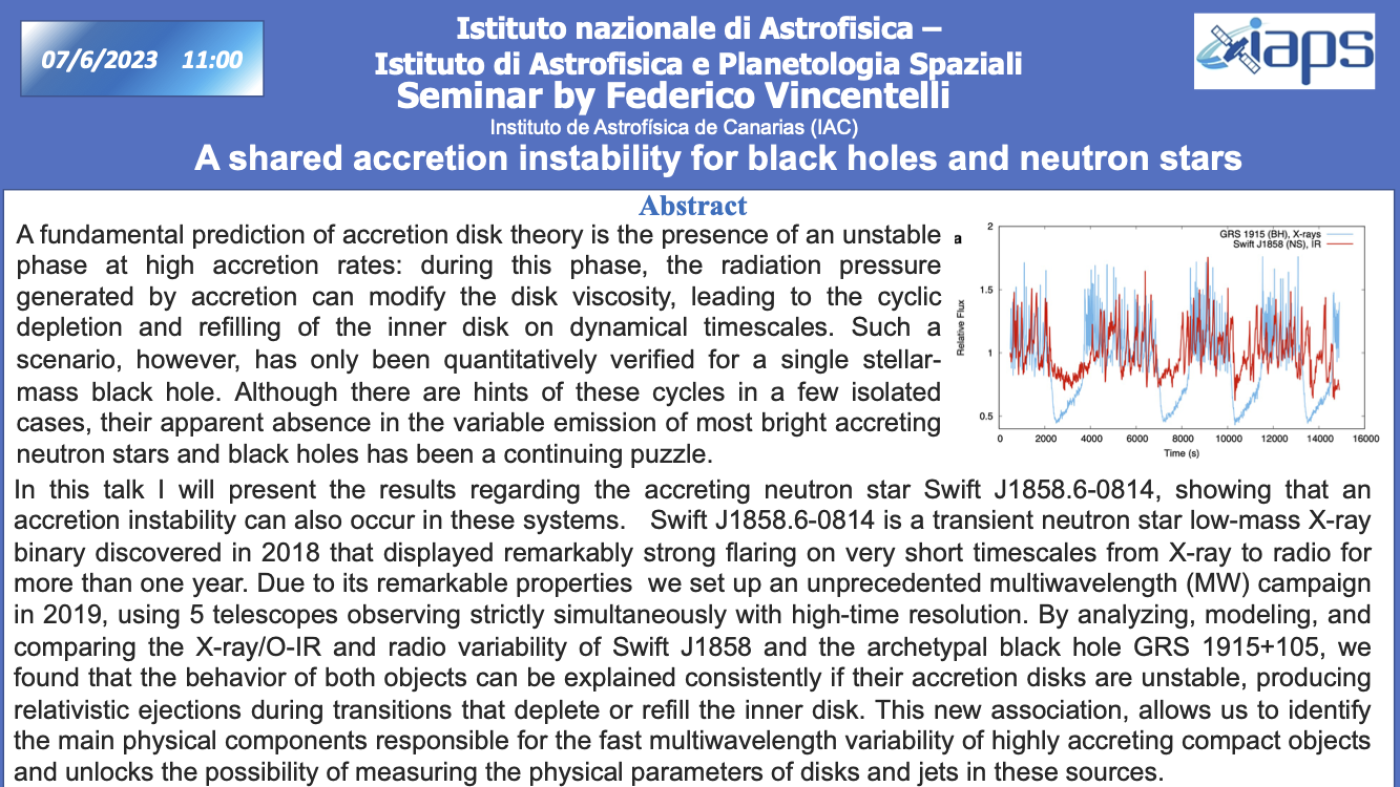A shared accretion instability for black holes and neutron stars
Affiliation: Instituto de Astrofísica de Canarias (IAC)

Abstract: A fundamental prediction of accretion disk theory is the presence of an unstable phase at high accretion rates: during this phase, the radiation pressure generated by accretion can modify the disk viscosity, leading to the cyclic depletion and refilling of the inner disk on dynamical timescales. Such a scenario, however, has only been quantitatively verified for a single stellar-mass black hole. Although there are hints of these cycles in a few isolated cases, their apparent absence in the variable emission of most bright accreting neutron stars and black holes has been a continuing puzzle. In this talk I will present the results regarding the accreting neutron star Swift J1858.6-0814, showing that an accretion instability can also occur in these systems. Swift J1858.6-0814 is a transient neutron star low-mass X-ray binary discovered in 2018 that displayed remarkably strong flaring on very short timescales from X-ray to radio for more than one year. Due to its remarkable properties we set up an unprecedented multiwavelength (MW) campaign in 2019, using 5 telescopes observing strictly simultaneously with high-time resolution. By analyzing, modeling, and comparing the X-ray/O-IR and radio variability of Swift J1858 and the archetypal black hole GRS 1915+105, we found that the behavior of both objects can be explained consistently if their accretion disks are unstable, producing relativistic ejections during transitions that deplete or refill the inner disk. This new association, allows us to identify the main physical components responsible for the fast multiwavelength variability of highly accreting compact objects and unlocks the possibility of measuring the physical parameters of disks and jets in these sources.


